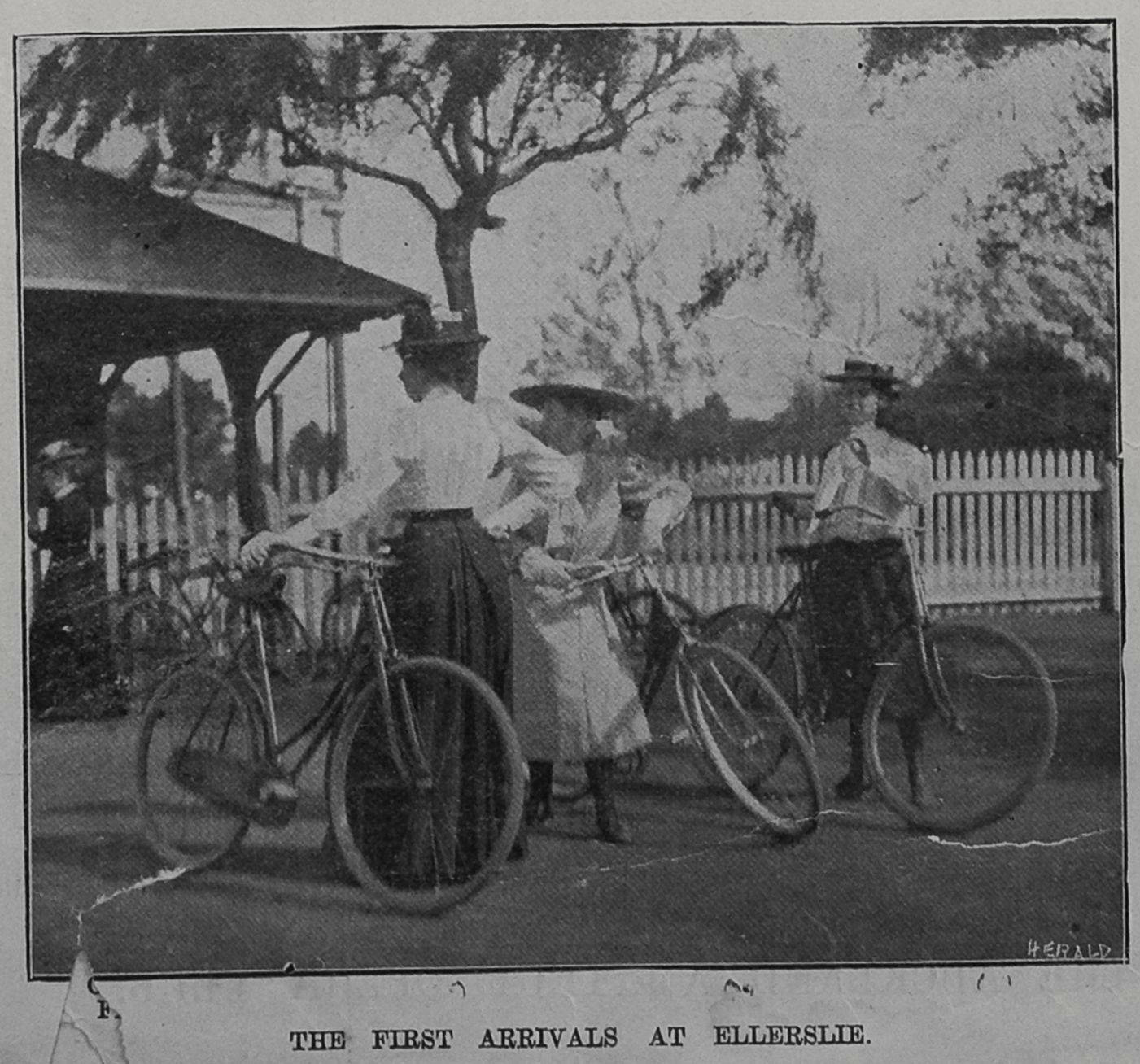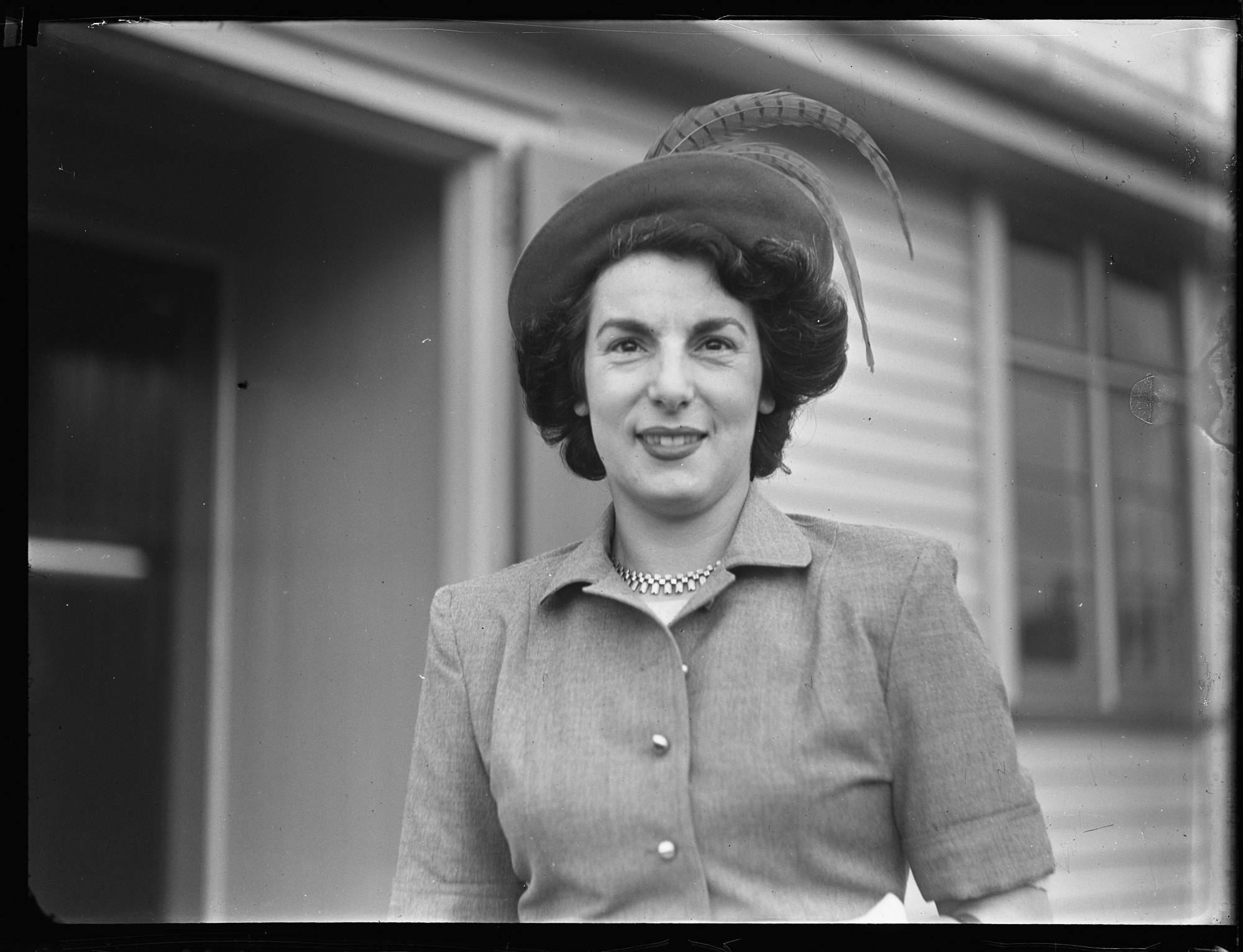fashion in the park: hats

Hats have been worn in Cornwall Park for everyday wear, formal occasions and sports activities since the day it opened in 1903. From the bowler hats, berets and fedoras of the 1900s, to the modern bucket hats and baseball caps we see today, let’s take a closer look at how hat fashion has changed over the last century.

Image description: Showing the first women to arrive at Ellerslie on the opening run of the Auckland Amateur Athletics and Cycle Club.
1900s
In the early 1900s, hats were an integral part of sports fashion, reflecting both practicality and style. Women taking part in sports activities, such as cycling, often donned boater hats. These hats, characterized by their flat tops and wide brims, were not only stylish but also functional, providing protection from the sun during outdoor activities. Boater hats were typically made of straw, making them lightweight and breathable, which was ideal for active wear.
This period saw a growing interest in outdoor sports and recreation. The boater hat became synonymous with the active, modern woman of the time, symbolising both her participation in recreational sports and her adherence to fashionable trends. Interestingly, while hats played a significant role in sports fashion, safety gear like cycle helmets did not exist until much later. The first standardized cycle helmet was not invented until 1975, highlighting the evolving nature of sports equipment and safety awareness over the years.

Image description: Some of the Motor Garage Proprietors New Zealand conference delegates at Cornwall Park.
1920s
Women in the Jazz Age did not leave the house without a hat or some type of head covering. Many men were also becoming more fashion-conscious, especially the growing numbers of clean-shaven, sharp-suited urban professionals. Cheese cutters, also known as flat caps, became a popular choice for these men, offering a stylish yet practical choice for daily wear. The 1920's saw a surge in hat diversity, with cloche hats dominating women's fashion. These closely fitted hats complemented the short hairstyles of the era, adding an elegant touch to the flapper look that defined the decade.
Hats were not merely accessories; they were statements of identity and a reflection of the vibrant cultural changes sweeping through society. The 1920s were marked by rapid social and cultural transformation, fuelled by technological innovations such as radio, cinema, gramophones, and motor cars.

Image description: Outdoor portrait of an unidentified woman wearing a hat with a feather.
1940s
Of all the historical hat styles, the 1940s stand out as a particularly fascinating era, characterised by creativity and a spirit of individuality. During this time, hats stayed an essential part of fashion, yet there was a notable shift towards experimentation and personal expression. The constraints of wartime led people to use hats to show their unique style. Although not everyone had dressmaking skills, many individuals found ways to personalise their hats by altering trimmings. Those who could sew, often crafted hats using offcuts and materials that were not rationed such as feathers, veils, and bows.
Additionally, the introduction of the New Zealand Holidays Act in 1944 marked a cultural shift by providing citizens with more leisure time. This change not only allowed people more opportunities to engage in recreational activities but also encouraged further exploration in fashion, as individuals now had more time to express themselves through their attire.

Image description: Farewell to Edith Watson at Cornwall Park
1960s
One of the most iconic trends of the 1960s was the mod style, which heavily influenced hat fashion. Fitted hats became particularly popular during this time, aligning with the sleek silhouettes and clean lines that were central to the mod aesthetic. These hats often featured simple, geometric shapes and were crafted from materials like felt and wool, providing a polished look.
The 1960s were a time of great social change, and hat fashion reflected these transformations. The era's music, art, and political movements all played a role in shaping the styles of the time. Influential figures like The Beatles and Twiggy helped to popularize new trends, with their distinctive looks inspiring fans worldwide to experiment with fashion, including their choice of hats.

Image description: The Archery Club in Cornwall Park beside One Tree Hill
1980s
In the 1980s, sports hats became more than just practical gear; they turned into a way for people to show off their team spirit and personal style. Athletes started wearing hats to display their team colours and logos, which helped build a sense of togetherness and pride among teammates. This wasn't just something professional athletes did—players in amateur and youth sports picked up on this trend too. During this time, sports and fashion began to mix, leading to more creative hat designs. Different styles like snapbacks, visors, bucket hats and caps became popular. Athletes experimented with various materials and colours, making hats a key part of their outfits both during games and in everyday life. This change helped blur the lines between sports clothing and casual wear, making athletic clothes more relaxed and everyday-friendly.
2000s - 2020s
Today, we see a revival of classic hat styles with a modern twist. This blend of old and new allow hat enthusiasts to express individuality while paying homage to traditional styles. Hats are now more than just accessories; they have become statements of personality and self-expression.
Hats are now celebrated for their incredible versatility. Whether you're enjoying a casual day at the park or relaxing at the beach, modern hats are crafted to suit a variety of occasions. Today’s hats often merge new technical fabrics with current trends, ensuring they look stylish while being practical and protective.
